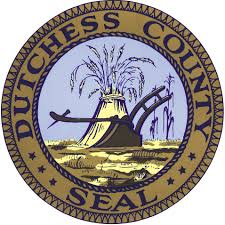
Dutchess County Scores Well for Fiscal & Economic Stability
Poughkeepsie… The Office of the New York State Comptroller scored Dutchess County Government well for strong fiscal management, with strong financial indicators and environmental indicators. NYS Comptroller Thomas DiNapoli developed the Fiscal Stress Monitoring System in 2012 to serve as an “early warning” of fiscal stress to local governments based on financial information and aspects of the external environment. The higher the score, the greater degree of fiscal stress. A score of 44.9% or less indicates a fiscally healthy local government and is not given a fiscal stress designation. Dutchess County scored a 22.1% on the Comptroller’s scale, maintaining the “no designation” classification. The score is a marked improvement from the 2012/2013 score of 41.3%. Dutchess County’s environmental score, which looks at economic factors such as unemployment rate and job count changes, also improved from 28.3% to 15.0%.
Dutchess County Executive Marc Molinaro said, “The improved scores are a result of our continued commitment, in partnership with the Dutchess County Legislature, to fiscal responsibility and economic improvement. Over the past few years, we have worked to overcome significant fiscal challenges and reestablish financial stability. We have reduced costs through consolidation and efficiency, rebuilt our fund balance, and have seen our bond rating upgraded to AA+ by Standard & Poor’s, while continuing to provide our residents with the services they count on. ”
The Fiscal Stress Monitoring System looks at two main components – financial indicators and environmental indicators.
Financial indicators evaluate budgetary solvency, the ability of a locality to generate enough revenue to meet expenses, by measuring Year-end fund balances; Operating deficits/surpluses; Cash position and Use of short-term debt for cash flow.
On a scale of 0% to 100%, with 0% being most favorable, Dutchess County received a score of 22.1% due to the following positive financial indicators:
• $39.9 million general fund balance at the end of 2014 is 9.8% of gross general fund expenditures, and within our goal of fund balance at 5% to 10% of budget;
• Over the past three years (2012, 2013 and 2014), the county had a deficit in only one year (2012), with a surplus in 2013 of $4.5 million and in 2014 of $21.6 million for all funds combined;
• Cash position is strong with a cash ratio for cash investment / current liability of 133.3% and cash as a % of monthly expenditures at 191.1%;
• Unlike some other counties and local municipalities, Dutchess County has not had the need to issue short term debt to compensate for cash shortfalls;
• Personal Services & Employee Benefits are only 38.1% of total revenues
• Debt service as a % of revenues is only 4%
Environmental indicators capture trends that influence revenue-raising capability and demands for service. Those indicators include Population, Age, Poverty, Property Values, Employment, Dependence on revenue from other government units, Constitutional tax limits and Sales Tax Revenue. The Comptroller’s Office notes that these environmental factors are largely outside of a county’s control, but they provide insight about the challenges confronting communities. Dutchess County is well below its constitutional tax limit and has seen growth in both sales tax revenue and employment, helping to improve the environmental score from 28.3% for 2013 to 15.0% for 2014.
“The Comptroller’s fiscal stress monitoring system is another helpful tool to evaluate our decisions and actions. While we will continue to remain focused on improving our county finances and strengthening our local economy, the Comptroller’s scoring provides some important outcome measures for the work we have done and demonstrates we are clearly moving Dutchess County forward in a positive direction,” concluded County Executive Molinaro.
